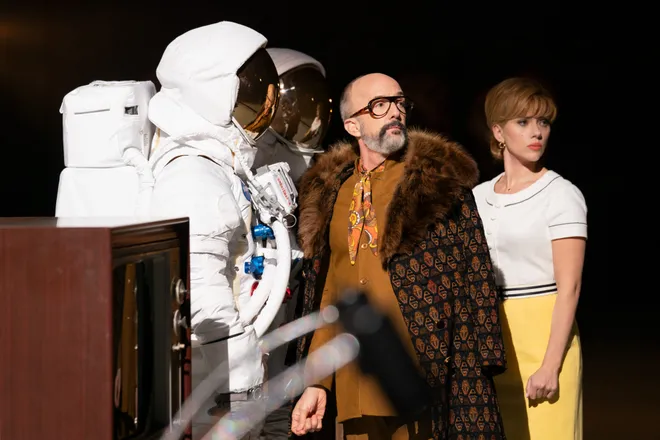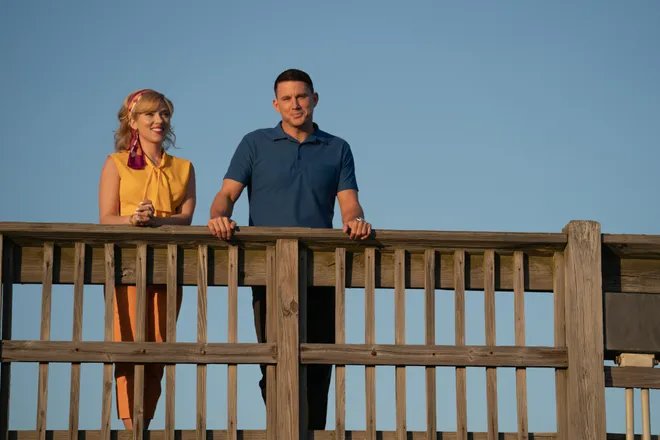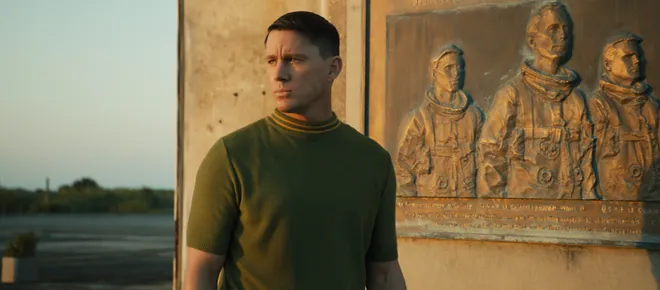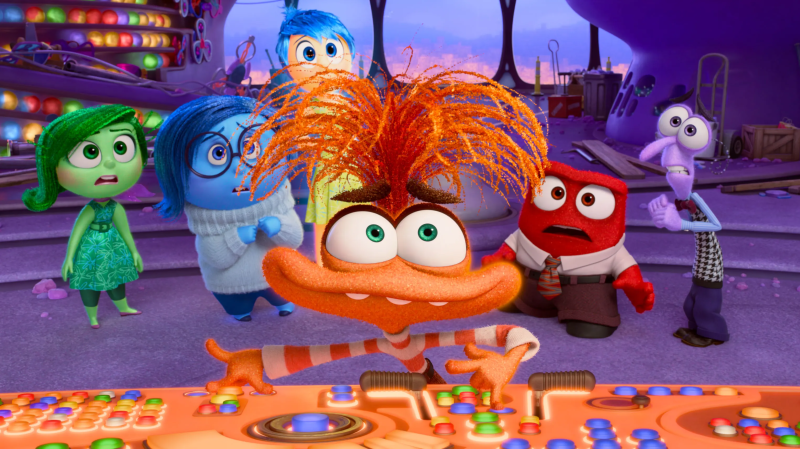Is 'Fly Me to the Moon' based on a true story? What's behind fake moon landing movie
Spoiler alert! The following contains plot details about “Fly Me to the Moon” (now in theaters).
How do you tell a fictional story about a fake moon landing with some real facts sprinkled in?
That was the challenge facing Rose Gilroy as she wrote “Fly Me to the Moon,” a romantic comedy set against the backdrop of the 1969 Apollo 11 space mission. With the blessing of NASA, the first-time screenwriter pored over transcripts of launch engineers and devoured countless books, including “Sunburst and Luminary” by Don Eyles, who assisted programming and troubleshooting the lunar module.
“It’s about how young all these engineers were during the Apollo time, and what a Wild West culture it was,” Gilroy says. “I think I read almost every book that exists on the moon landing.”
Join our Watch Party!Sign up to receive USA TODAY's movie and TV recommendations right in your inbox
Need a break? Play the USA TODAY Daily Crossword Puzzle.
With Gilroy's help, we unpack what’s fact and fiction in the new movie:
Is 'Fly Me to the Moon' based on a true story?

In the film, Scarlett Johansson plays a savvy marketing executive named Kelly Jones, who is hired by the government to help swing public opinion back in favor of space exploration. In the late 1960s, “a lot of the American public was opposed to funding the moon mission,” Gilroy explains. There was widespread social unrest, with the Vietnam War and civil rights movement, “and people felt, ‘Why are we spending money on this when we could be spending money on all these people who need it here?’”
Gilroy looked to “Marketing the Moon,” a nonfiction book by David Meerman Scott and Richard Jurek, which details how NASA made the moon enticing to the masses through product placement, magazine articles and TV specials.
“It’s about the original ads that were used, and how sci-fi was woven into the minds of the American people” using genre books and movies, Gilroy says. “That was instrumental. It was endlessly interesting to learn all the ways they sold” the Apollo 11 mission.
Is Scarlett Johansson’s character based on a real person?

Johansson’s character is loosely inspired by Julian Scheer, a journalist-turned-public relations expert, who worked for NASA in the 1960s and coordinated news coverage of Apollo 11. He wasn’t from the advertising world like Kelly, “but he was brought in to help market the moon,” Gilroy says.
When she arrives at NASA, Kelly clashes with launch director Cole Davis (Channing Tatum), who feels that her efforts undercut the integrity of the mission. In reality, Scheer actually did butt heads with flight director Deke Slayton.
“There really was a massive argument of, ‘You want to put a camera on (the module)? What, are you crazy? We’re just trying to get up there,’ ” Gilroy says. “Of course we fictionalized it, made (Scheer) a woman and totally changed her backstory. But the heart of that existed, and those conversations did happen down at NASA.”
Who does Channing Tatum play? And what was the Apollo 1 tragedy?

Despite its lighthearted spin on history, the comedy deals with serious themes. An emotional through line is the Apollo 1 incident in 1967, when three astronauts were killed in a cabin fire during a launch test. In the world of the film, they were close friends of Cole’s, and he worries about more tragedy should anything go wrong with Apollo 11.
“Cole is really an amalgamation of so many of the flight directors and people who had to deal with the grief of Apollo 1, and then continue on to try and do the impossible,” Gilroy says. “Cole the character is not real, but his grief is. Thousands of people who had jobs like that had to go into work every day, knowing they’re carrying the legacy of people they lost.”
So was there a fake moon landing? Don't look for conspiracy theories here.
Despite what the movie's trailers suggest, very little of “Fly Me to the Moon” has to deal with staging a moon landing. Midway through the film, government agent Moe Berkus (Woody Harrelson) approaches Kelly about taping a fake moon walk, which can air on TV in case anything goes awry with Apollo 11. We then see a few scenes of eccentric director Lance Vespertine (Jim Rash) casting astronaut actors and choreographing the first steps on “the moon” (a dirt-covered soundstage).
There are some jokes about Stanley Kubrick, who many conspiracy theorists believe shot the moon landing. But for the most part, Gilroy didn’t want to dwell on what she considers “paper-thin” conspiracies. “I would never in any way want to do anything to imply that it wasn’t real,” she says.

But she did have fun with superstitions at NASA: According to transcripts, numerous engineers were “very superstitious” about things like ladders and black cats. It’s why a temperamental kitty disrupts the fake moon landing at the end of the movie.
“It’s fun to play with good and bad luck, especially when you’re doing a mission like Apollo 11,” Gilroy says. “The cat is one of my favorite parts of the story.”
Disclaimer: The copyright of this article belongs to the original author. Reposting this article is solely for the purpose of information dissemination and does not constitute any investment advice. If there is any infringement, please contact us immediately. We will make corrections or deletions as necessary. Thank you.







